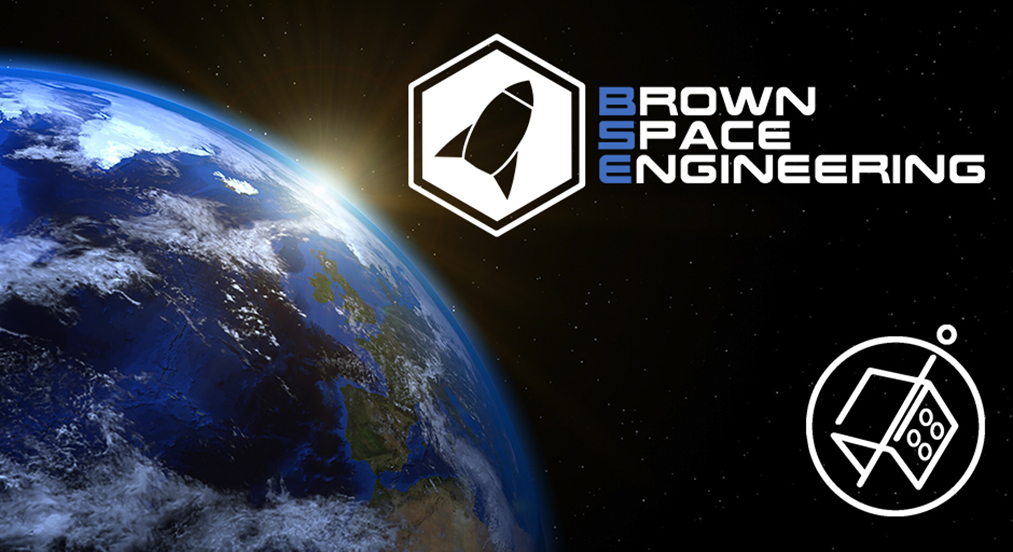 Brown Space Engineering (BSE), a team of Brown University undergraduate students, is excited to announce that its first satellite, EQUiSat, will be launched to and deployed from the International Space Station (ISS) in early 2018 as part of the ELaNa-23 mission. In 2014, the group received a guarantee for a launch as part of NASA's fifth round of educational launch initiative. In the second quarter of 2018, EQUiSat will be launching to the ISS with a NASA-contracted private space company. The deployment will occur in the third quarter, when EQUiSat will be placed into an ISS orbit of 400 km altitude and 52˚ inclination. This orbit is ideal for the mission as it provides the most potential visibility without sacrificing mission duration.
Brown Space Engineering (BSE), a team of Brown University undergraduate students, is excited to announce that its first satellite, EQUiSat, will be launched to and deployed from the International Space Station (ISS) in early 2018 as part of the ELaNa-23 mission. In 2014, the group received a guarantee for a launch as part of NASA's fifth round of educational launch initiative. In the second quarter of 2018, EQUiSat will be launching to the ISS with a NASA-contracted private space company. The deployment will occur in the third quarter, when EQUiSat will be placed into an ISS orbit of 400 km altitude and 52˚ inclination. This orbit is ideal for the mission as it provides the most potential visibility without sacrificing mission duration.
Brown Space Engineering has been working nearly six years on the design, development and manufacturing of EQUiSat, a 1U, 1.3kg CubeSat. The aim of the mission is to help cross the accessibility divide of space by developing a low-cost, open source system that will enable people to interact with the skies above them in a completely new way. EQUiSat has three main capabilities. It will be brighter than most of the stars in the sky (as bright as a magnitude 3 star), within earshot of amateur radio users, and will be testing experimental battery technology for the expected mission duration of three to six months.
The group's goal was to build the entire assembly for $5,000 to push the limits of affordable space based technology. To accomplish this, they have been using many of the resources available at Brown to lower the cost of spaceflight. Over the past several years, team members have designed and assembled the spacecraft using simple and inexpensive, yet reliable parts. They have milled out a custom chassis from a single block of aluminum, a process that can take up to 60 hours. They have designed and fabricated the solar panels and found innovative solutions to protect them from harsh temperatures. They have simulated and modeled the optics of the LED array to ensure their light will reach eager onlookers staring up from the center of Providence. They have figured out how to connect with universities and individuals over HAM radio as EQUiSat orbits our planet every 90 minutes at nearly five miles per second.
In the following months, the group will be doing everything possible to ensure the success of the mission. In early March, they will be proceeding with the first round of assembly testing to validate the design. In this series of rigorous tests, the satellite will undergo intense vibrations and accelerations to replicate the extreme launch environment. Vacuum and thermal testing will be performed to help us ensure that the assembly is capable of surviving for an extended period of time once in orbit.
About Brown Space Engineering
Formally known as the Brown CubeSat team, Brown Space Engineering has around fifty members and has been working on the development of EQUiSat for the past six years. After originally coming up with a concept for EQUiSat during a course on Space Systems Design, the team applied and received a guaranteed launch with NASA. In previous years, they have worked closely with the West Broadway Middle School, holding weekly workshops that introduce children of all ages to some of the physics and engineering concepts behind spaceflight. This year, they will be opening up their program to a number of local Providence schools. They are also planning on launching and recovering a balloon from the edge of space, with the first 360˚ camera to reach such heights.
For more information about the team or satellite, please visit http://brownspace.org or contact bse@brown.edu.